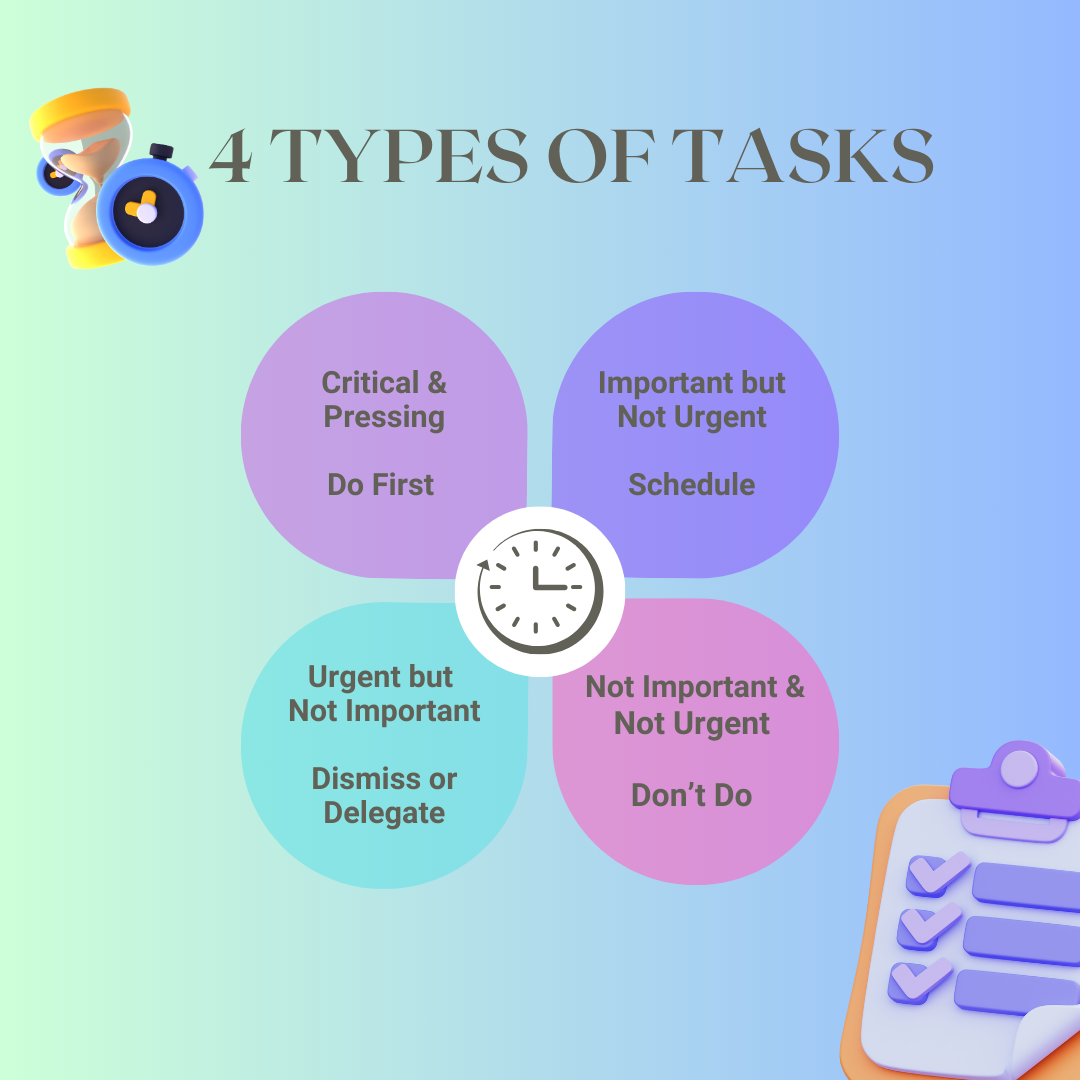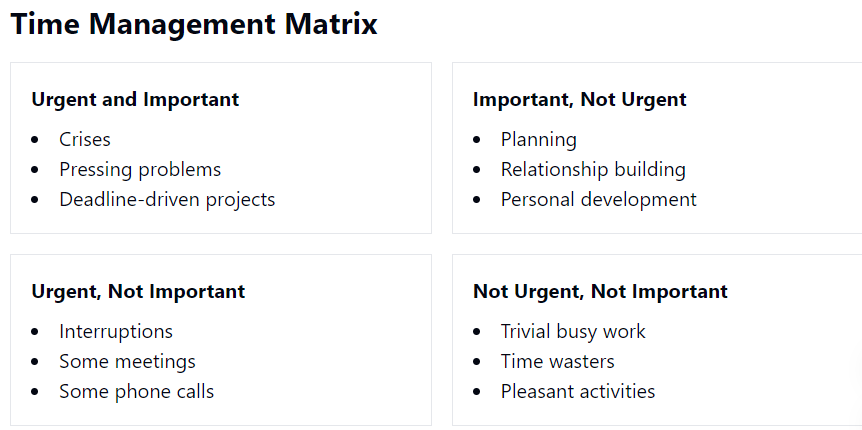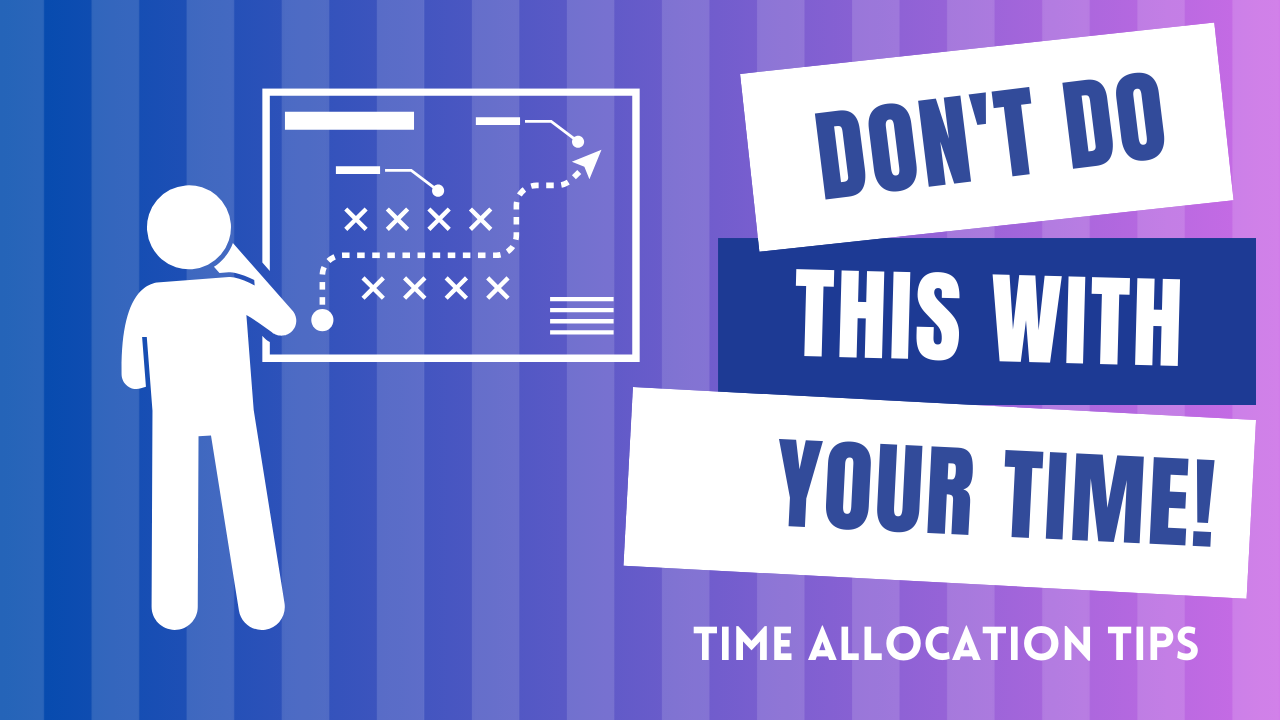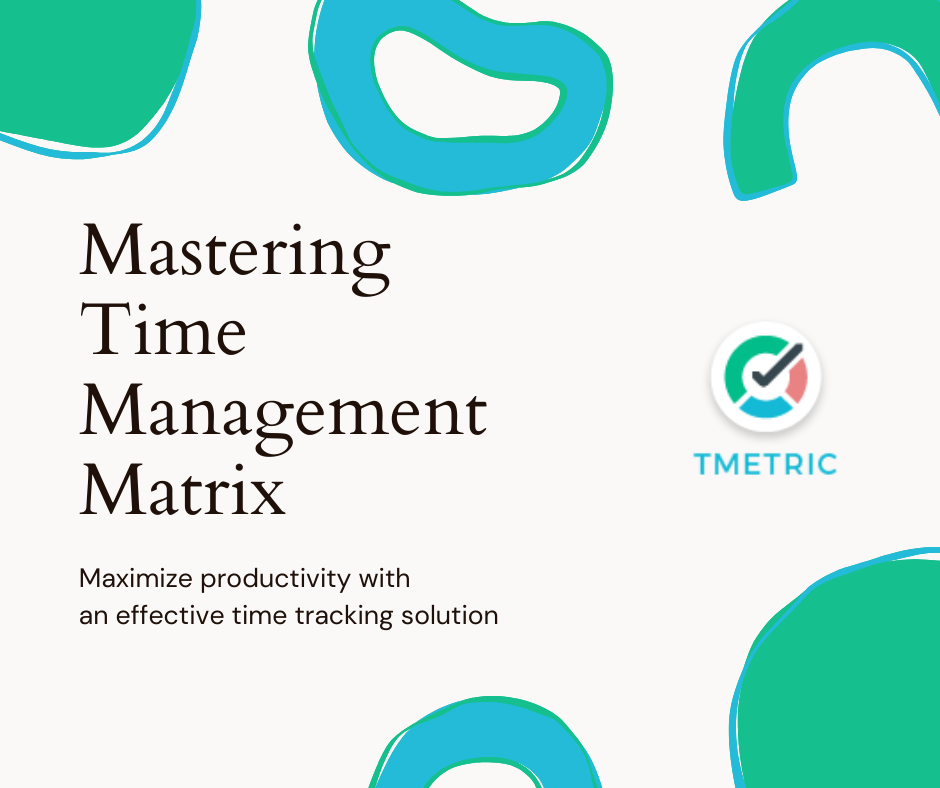A Comprehensive Guide to the Time Management Matrix
This comprehensive guide explains the time management matrix in detail, offering tips and techniques for effectively managing your time and priorities. Learn how to optimize your productivity and focus with this invaluable tool.

The time management matrix, which is also referred to as the Eisenhower Matrix (named after the former US President Dwight D. Eisenhower, who was famous for managing his time wisely and making difficult decisions) is an effective tool in:
Prioritizing tasks
Maximizing productivity
Leveraging time as the most valuable resource.
Basically, it guarantees to make you more productive and achieve a balance of work and life.
This concept was popularized by Stephen Covey in his bestselling book "The 7 Habits of Highly Effective People" (1989) translated into 40 languages.
It is ideal to go through your to-do list and establish:
What should you do at once?
What is able to be made into later?
What can be assigned or can be done away with?
The Four Quadrants

It presents a grid in the form of a four-quadrant matrix: each of the quadrants corresponds to a different type of task categorised by:
- Urgency
- Importance.
Do First (Urgent and Important)
Crises, deadlines, pressing problems
- These are the tasks of paramount importance that require your attention.
They have strict deadlines – we could face severe outcomes in case of their neglect.
To Illustrate:
Attending to a call of emergency call, e.g., an accident or a medical emergency.
Working on an urgent assignment or project that has high priority.
Creating a solution to an important issue through a product or service that addresses customer complaints.
Being ready against a natural disaster, e.g., hurricanes or earthquakes.
Management of a compliance, legal, or other issue that has meaningful consequences.
Being in attendance at an important meeting or presentation that cannot be postponed.
Settling time-dependent financial matters.
Coping with a security breach or cyber attack that threatens your organization.
Giving help to a teammate who is in dire need.
Making a choice that will be reflected in business or life.
Schedule (Important, Not Urgent)
Planning, relationship building, prevention, preparation
- These are important tasks that contribute to your long-term goals but their deadlines are not pressing yet.
They often get pushed aside in the face of urgent tasks.
To Illustrate
Preparation of a strategic plan for your department or organization.
Establishing a positive relationship with important parties, joint ventures, or clients.
Carrying out research or analysis to formulate decisions or future projects.
Improving skills or knowledge by some form of training, workshops, or self-learning.
Looking back on prior experiences or reviewing to see what should be done to improve.
Setting priorities of work and division of labor.
Enhancing communication links in your team or organization.
Making plans to deal with possible pitfalls or hazards.
Approach an experienced professional as a mentor, coach, or adviser.
Spreading out mindfulness, meditating, exercising, or other stress management strategies to sustain good health and concentration.
Delegate (Urgent, Not Important)
Interruptions, meetings, popular activities
- These are time-sensitive tasks, but they do not demand immediate attention.
Delegating these tasks to others can be a solution to free up your time so that you can focus on what truly matters.
To Illustrate
The interruption of work, distraction, emergency, or tardy requests divert attention to less crucial matters.
The crisis management scenarios in which an urgent reaction is needed, but which might not be compatible with the larger priorities.
Technical problems, damaged equipment, or administrative problems requiring a timely solution.
Harsh deadlines of low-value / non-emergency projects or assignments.
Marginal meetings, calls, or emails are taking up treasured resources of time and energy.
Constant alerts using social media or news updates, or another notification that hinders concentrated work.
Maintenance or housekeeping, routine clerical work, which was possible to schedule or automate.
Pursuing small opportunities, leads, or prospects that would not give much return in terms of investment.
How to solve a last-minute office supply emergency.
Engaging in office gossip, politics, or drama does not help in enhancing professional growth and development.
Eliminate (Not Urgent, Not Important)
Time wasters, trivia, pleasant distractions
These are the time-wasters and distractions that don't contribute to your goals. Eliminating them frees up mental and physical space for more important things.

To Illustrate
Spending too much time on social media, watching videos, or looking at stuff online for no real reason.
Playing games or doing fun things when you should be working.
Putting off important tasks to do less important ones.
Checking your email or messages way too much all day for no good reason.
Getting lost in small details or off-topic chats while trying to get work done.
Piling up things you don't need, making a mess with too many items or papers.
Doing the same tasks over and over by hand when you could make them faster or automatic.
Thinking too much about small things that don't matter, stressing or fussing over little troubles.
Not following advice on staying healthy or eating well, even though you know it's important.
Using the Time Management Matrix

Collect your tasks in one list: Write everything you need to do
To see which quadrant a task belongs to, address these questions:
Is it urgent?
Does it require immediate attention?
Is it important?
Does it add to your goals or values?
Categorize each task: For each task, determine its urgency and importance and place it in the appropriate quadrant of the matrix.
Take action: Now that your tasks are prioritized, create a plan and act on it.
Want all your tasks to contribute directly to your ultimate goals? Leverage the power of focusing on not urgent but important.
The Bottom Line: If you want long-term success, focus on Quadrant 2 activities (not urgent but important tasks) – they are always the foundation of our progress.
Benefits of the Time Management Matrix

The Eisenhower Matrix sorts tasks into those that:
1. move you ahead
2. hold you back.
Here are the main good things it brings:
Better Focus: By knowing what's urgent, you can give your all to tasks that count the most.
More Done: When you set tasks by what's first, you use time well, which means more work gets done.
Less Stress: Knowing what job to do first cuts down on worry from big to-do lists.
Wiser Choices: The matrix gives you a clear plan for smart choices on using your time.
Better Accountability: When you categorize tasks, it is easier to focus on completing the most critical ones.
Time Saving: It is halfway to success to identify and eliminate non-essential tasks to free time for more important activities.
Goal Alignment: You see your daily activities and analyze them for the benefit of reaching your long-term goals.

Time Management Matrix Mishaps
To maximize the benefits, be aware of common mistakes when using the time management matrix.

Mistake 1: You fail to properly categorize tasks
One of the key mistakes is categorizing tasks into the four quadrants based on their urgency and importance incorrectly.
This can lead to misallocating time and effort on the wrong priorities.
How to Define Clear Categories
- Relevance: Ensure categories are directly related to your goals and objectives.
- Specificity: Avoid overly broad or vague categories.
- Hierarchy: Consider creating a hierarchical structure for tasks, with larger, overarching categories and more specific subcategories.
Mistake 2: You are neglecting Quadrant 2 (Important but Not Urgent Tasks)
Unfortunately, many people focus too much on the urgent tasks in Quadrant 1, while neglecting the important but not urgent tasks in Quadrant 2.
This can cause long-term priorities to be pushed aside.
Mistake 3: You are spending too much time on Quadrant 3 (Urgent but Not Important)
It's easy to get pulled into what seems like urgent but in actuality unimportant tasks (emails, phone calls, and interruptions).
This takes up time without moving you closer to your objectives. Minimize time spent in Quadrant 3 by learning to automate or eliminate.
Mistake 4: You are failing to review the matrix
The time management matrix is not a static tool - it needs updates and adjustments because our circumstances can change.
Find time to reassess the matrix; otherwise, it can lead to outdated categorizations and poor time allocation.
Mistake 5: You are trying to do everything by yourself
Some people make the mistake of handling all tasks themselves rather than delegating work.
This can restrict productivity and personal growth.
Learning to effectively distribute workload and delegate Quadrant 3 and 4 tasks is key to focusing on high-impact work.

Use TMetric to Build Your Time Management Matrix

The matrix is just one piece of the puzzle. For real success, you need a steady tool that fits the rules of the time management matrix.
TMetric is a tour de force of time management
Features like real-time task tracking, data-driven analysis, and distraction monitoring can help users categorize tasks based on urgency and importance.
Its automated attendance and leave management functions can:
- streamline admin work
- free up time for more strategic tasks.
TMetric productivity reports and analytics provide insights to help users make informed decisions about task prioritization and time allocation.
TMetric helps identify low-value, time-consuming tasks, automate or delegate them, and eliminate those with minimal impact.
It can push you to stop wasting time on Quadrant 3 (Urgent but Not Important) tasks and align you with the principles of the time management matrix at best.
FAQs
What strategy helps reduce time in Quadrant I (Urgent and Important)?
Focus on Quadrant II (Important, Not Urgent) - it will help reduce Quadrant I time automatically.
🙌Proactive planning, prevention, and delegation in Quadrant II are techniques that help prevent avoidable crises.
How can one increase focus on Quadrant II activities?
Pay attention to tasks on Quadrant II - they are always connected with long-term goals.
Also, you can delegate or eliminate less critical tasks, and create dedicated, uninterrupted focus blocks.
How can the Time Management Matrix be adapted for team or project management?
The Time Management Matrix can be used by teams; managers can apply it to project tasks.
It is a great tool to allocate resources and responsibilities based on urgency and importance.
What makes this tool appealing is its visual basis and huge potential for collaborative planning.
How can the Time Management Matrix help in managing work-life balance?
The Time Management Matrix helps balance work and life with clear categories of tasks.
Using this matrix, you can reduce time spent on urgent but unimportant activities and allocate this time for personal well-being.



